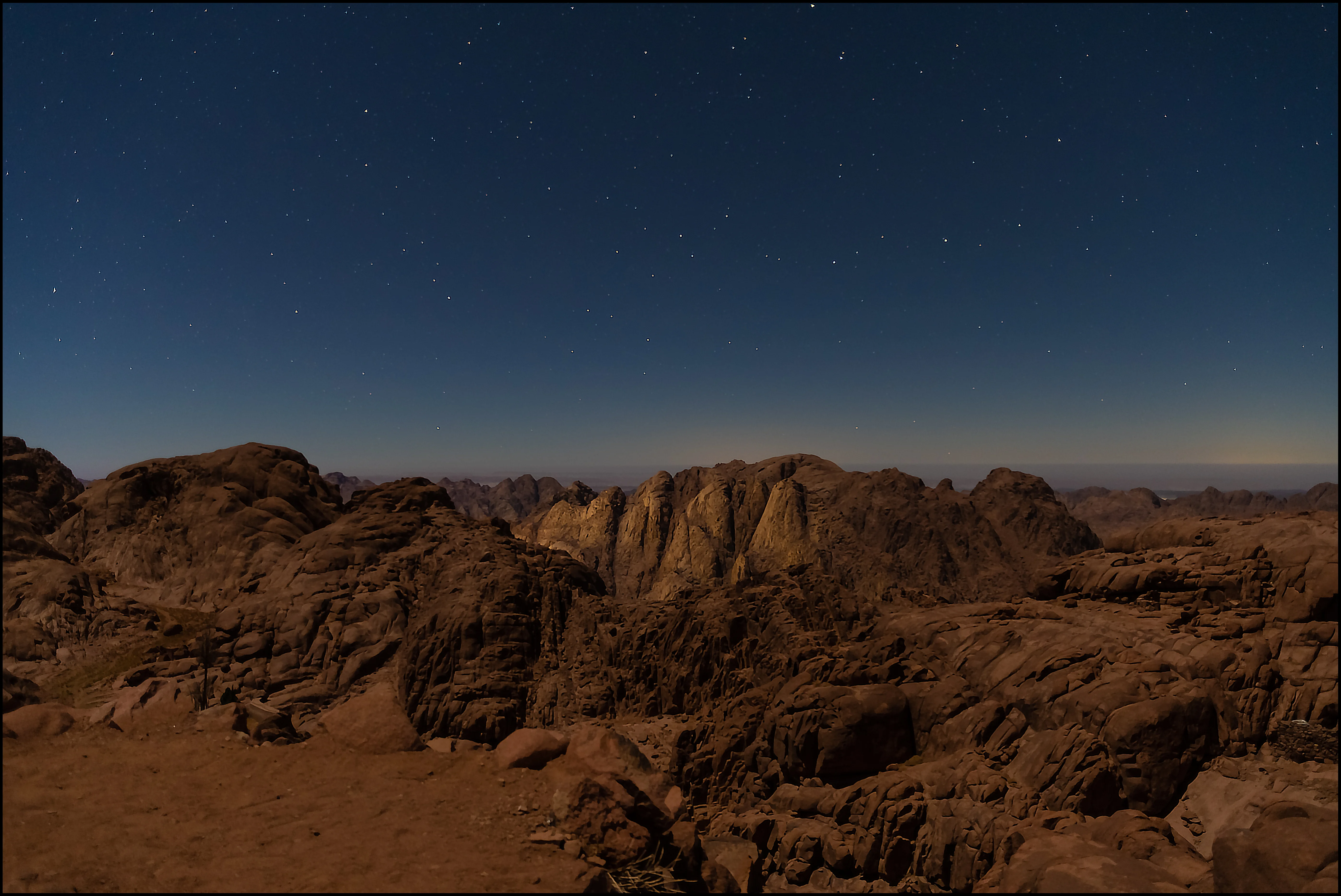For the ancient Egyptians, the stars were more than a spectacle; they were essential to life. Astronomy played a key role in agriculture, religion, and architecture. A significant example is the heliacal rising of Sirius—when the star Sirius first becomes visible in the dawn sky after a period of being hidden. Known as Sothis to the ancient Egyptians, this event marked the start of the Egyptian New Year and foretold the annual flooding of the Nile, which was crucial for farming. Many temples and pyramids were aligned with celestial bodies, symbolizing the deep connection between their structures and the cosmos. Today, Egypt’s deserts, with their unpolluted skies, offer a rare chance to witness the same starry vistas that shaped one of history’s greatest civilizations. The Sinai Mountains Rising from the Sinai Peninsula, the rugged Sinai Mountains are steeped in history and spirituality. Mount Sinai, believed to be the biblical mountain where Moses received the Ten Commandments, draws pilgrims and adventurers alike. But as night falls, the area reveals another marvel: its pristine desert skies. High elevations and minimal light pollution make it an ideal spot for stargazing, often accompanied…



